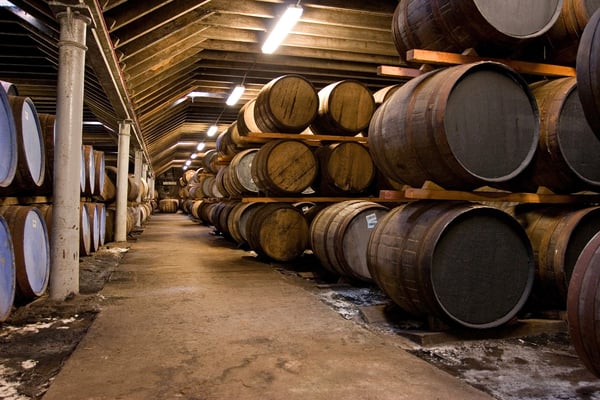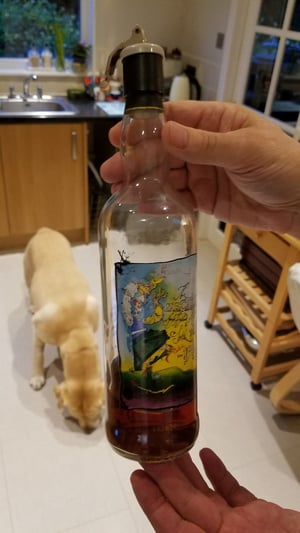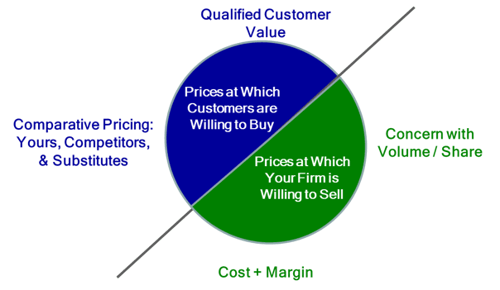CEO Blog - Advice for CEOs on growth and scaling
The Value of an Old Scotch

This is a love story with a business point.
Around twenty five years ago Gordon, the whisky-loving half of a couple in Glencoe, Scotland, bought a limited production bottle of Macallan 1961. It was pricey, so he put it away in a cabinet in its original packaging to await a suitable occasion. Then he pretty much forgot about it.
He found it in 2019 and thought, "Wow, we really do need to find an occasion to drink this." A few weeks later, an old friend came to town. Gordon and the pal opened the bottle and did a few pours. The whisky’s color, nose, and taste were superb, and they savored it greatly.
When Gordon's wife Ruth came in, he showed her the bottle. Ruth got to wondering what it was worth. She looked on the internet and turned pale.
“It looks like, if that bottle were unopened, it would be worth about 8,000 pounds,” (~$14,000 USD). “And me needing a new car, Gordon!!”
Gordon is immensely grateful to Ruth, as she recently showed signs of forgiving him.
When the Market Price is Unclear, How Do You Price?
There’s enough of a market in rare whiskies that a market price range for certain bottles can be discovered, as Ruth did. That’s true for most standard products produced in quantity, and services as well.
Valuing a very distinctive product / service solution is a much tougher challenge for many businesses. The more distinct, the more customized, the less likely that there is a “market price” for the solution. What then? How do you go about pricing your distinctly valuable solution?
There’s a process for that.
Using the Daring Caution Pricing Profile to Price
When I work with clients that customize or otherwise find it difficult to discover a market price, we follow a simple yet powerful process toward better pricing.
It’s based on the Daring Caution Pricing Profile, with four factors to consider as you make decisions about pricing.
The most important consideration in setting your offer-to-sell price is the pricing at which customers are willing to buy. That’s determined by combining the value to a qualified customer with the customer’s reference prices (competitor prices, prices of substitutes, and your past prices).
The second set of considerations determine the prices at which your company is willing to sell.
To apply this framework, here’s a simplified action plan:
- Determine what your product / service solution is likely to be worth in use by your prospects and customers
Does your solution help customers protect and enhance unit sales, price per unit, and/or mix? Decrease costs? Decrease assets required in the business? Decrease risk? Estimate what these effects may be worth in the customer’s financial statements.
- Define a potential split of value between your business and your customer, and set an initial test price or price range reflecting that split
- Test that initial price or range against the price of the customer’s alternatives, and arrive at a 2nd tentative price or range
- Now check that 2nd price or range against the prices at which you’d be willing to sell, considering your cost and margin, pipeline strength and capacity utilization, and considerations such as treating similar customers similarly.
Now you can combine the external (1-3) and internal (4) pricing factors to arrive at your offer-to-sell pricing.
- Develop an implementation plan, including a pricing policy with delegation of authority (including whether you would ever discount, by how much, and who decides), project plan, and a communication plan.
This outline is based on the methodology I developed in working with companies that want to take a Daring Caution approach to their prices. I customize the approach to each company’s pricing environment, and guide their decisions and implementation.
A 1% change in price is more powerful than volume increases or cost decreases. I’ve seen improvement from 1 to 3 full gross margin points in companies I’ve worked with.
Would you like to learn more about how I can help your company, or one you know, find more dollars that could be and should be coming in the door? Head over here to set up a time to talk.
Topics: Marketing Strategy, Pricing, Price Strategy
Tue, Mar 2, 2021Featured Chief Outsider
/CMO-Bob-Sherlock.jpg?width=200&height=200&name=CMO-Bob-Sherlock.jpg)
Bob Sherlock
Related Articles

- Press Releases
- Careers
- Case Studies
- Marketing Consultant Company
- Marketing Strategy Consultants
- Marketing Plan Consultants
- B2B Marketing Consultants
- Virtual CMO
- Marketing Consultant Outsourcing
- Fractional CMO
- What is a Fractional CMO
- Healthcare Marketing Consultant
- Marketing Consultant Houston TX Texas
- Marketing Consultant Texas TX
- Marketing Consultant Bay Area
- CEO Blog
- Ebooks Plus
- Executive Marketing Consultants
- Product Marketing Consultants
- B2C Marketing Consultants
- Virtual Marketing Consultants
- Senior Marketing Consultants
- Temporary CMO
- Hire a CMO
- Fractional CMO Salary
- Fractional CMO Responsibilities
- Marketing Consultant Austin TX Texas
- Marketing Consultant Dallas TX Texas
- Marketing Consultant San Antonio
- Helping Private Equity
- Private Equity Blog
- Leadership Team
- Privacy Policy
- Business Marketing Consultants
- Strategic Marketing Consultants
- Marketing Technology Consultants
- Sales and Marketing Consultants
- CMO Job Description
- CMO Salary
- Fractional CMO Agency
- Fractional CMO Services
- CPG Marketing Consultant
- Marketing Consultant San Diego
- Partners
Houston, TX 77056
© 2023 Chief Outsiders



